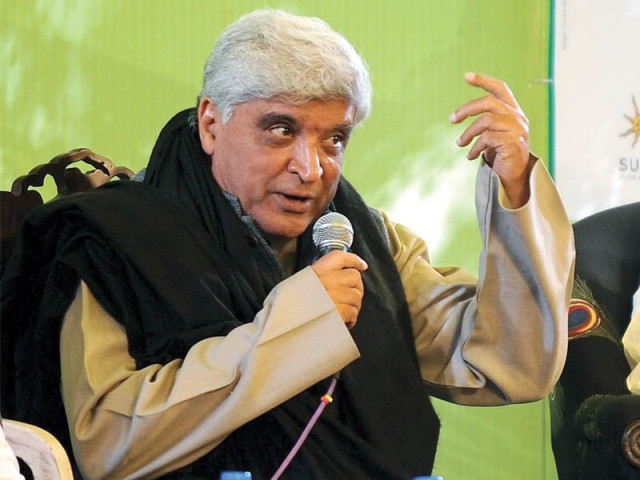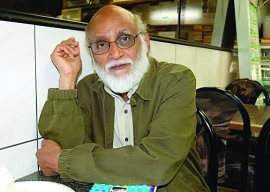
Jaipur is called the Pink City. The reason, I found out, was that the whole city was painted pink to welcome the Prince of Wales in the mid-19th century, the heyday of the British Empire. The curious choice of the colour pink may have been the individual caprice of a Rajput chieftain or collective aesthetic of the time, but during the few days I spent in the Jaipur environs, I felt there was something organically pink about Jaipur unlike any other place to which I have ever been. Furthermore, I discovered, there is not just one distinct pink colour which adorns the buildings and avenues, the parapets and walls, but a range of heart-wrenching and mutually encroaching variegations on pink that spawn from the local sandstone inwrought over the millennia from the blowing and whiling sands of Rajasthan — a joy to behold, particularly in the glories of dawn and dusk in the outskirts of city.
I had driven in to Jaipur from Delhi — a five-hour weave-and-sway between trucks — past midnight, and woke up, albeit on a few scant of hours of sleep, to a gloriously, yes, pink morning. As disasters go, not finding running hot water on a winter morning is right up there with a few others that I consider unmitigated. On the back of mind was the 10 am panel discussion featuring Gulzar and Javed Akhtar; there were a couple of other multidimensional artists — Pranaal Joshi and Vishal Bhardwaj — on the panel, too, but I was to find out about their names, achievements and enormous lucidity about literary matters later.
There was no time to meditate on the nature of the disaster or get the hotel crew to work on their plumbing conundrums. I knew I had to avail myself of the extraordinary opportunity, and rush to the Diggi Palace, the arena that holds the Jaipur Literary Festival (JLF). It was a 15 minute ride to Diggi Palace, which was decked out in pink and other colours, both in accord and wildly in contrast with the Jaipur pinks, in the shape of paper and cloth ribbons and sheets covering the pindaals and walking alleys, and lending it a festive air. The participants, too, the writers and movie-wallahs, the academics and gawkers, all dressed in their artistic whimsy and colour contributed sparks to the occasion. Scattered throughout the palace were tea vendors filling small terracotta cups with sweet cardamom tea for INR5. One could snack on samosas and papri chaats, too, throughout the day. I actually saw people partaking in the fiery stuff for breakfast.
The venue is an old Rajput chieftan haveli located near Ajmeri Gate, and is divided into four spaces or pindaals namely Durbar Hall, Mughal Tent, Baithak, Front Lawns which holds concurrent sessions from 10 am to 7:30 pm. All sessions are fee to the public and there are musical performances in the evening. The musical evenings cost INR200.
Salman Rushdi, the media seemed to suggest, was the only guest who was invited at the JLF. He certainly was the only one disinvited. Even before I got to Diggi Palace on the last day of the festival, the discourse around the inviting, the disinviting, the video address, the denial of video address, the invite and disinvite as a political ploy, not of Rushdi or that of the festival organisers but off — take that — The Congress Party, with an eye on the next elections.
Apart from this, what got the ink going was the presence of Oprah Winfrey. She was here on January 22, and from what I read and heard she endeared herself to the adoring public with her appreciation of local culture and her vociferous support for women’s causes.
At the venue, I tried to let the media swirl behind me and immersed myself in the proceedings. It wasn’t much trouble as I right away stumbled into a discussion around a favourite subject titled “Reconstructing Rumi”. Carl Ernst and Farrukh Dhondy worked the intricate labyrinths of Rumi’s poetry to an enraptured audience. Ernst reminded the audience that just as Dante had used Beatrice in “The Divine Comedy”, Iqbal had used Rumi as a literary device in “Javed Nama”. Sublime literature, masters tell us, withstands the test of time. That got me thinking if the analogy between Dante and Iqbal was a fair one - clearly Dante after more than 800 years has while Iqbal’s resonance stems largely from the politics in our subcontinent during the last, oh, 70 years. Hurriedly, I made a note to do both “Inferno” and “Javed Namah” upon my return. During my extended stay in the US, I was both surprised and amused at the kind of press and adulation Rumi drew there; ironically, he is the best selling poet in the US. From the rapt attention at the Diggi pindaal, I could feel Indians are even more in tune with our perennial master.
Close to home
In the afternoon, I attended a session on identity and location titled, “Nothing to declare: Straight lines and history”. The four panelists — Mohammed Hanif, Fakhrul Alam, Ravi Thapa, Siddhartha Gigoo — were all from Pakistan, Bangladesh, Nepal, and Indian Kashmir respectively. Gigoo spoke about his tumultuous experience of watching Kashmiri Brahmins leaving their centuries-old abodes because of violence while Thapa discussed misunderstandings about identity within the borders of Nepal. Academic essayist Alam evoked Edward Said and Amitav Ghosh and how those authors helped him grapple the notions of identity. The session was, however, hijacked, albeit unwittingly by A Case of Exploding Mangoes fame Mohammed Hanif. The audience found his self-deprecating humour endearing as he told stories about his gig as a BBC stringer and as a writer in Karachi.
Gulzar
I have sought out Gulzar’s work for several decades now, but this was the first time I saw the master in person.
Gulzar started by revealing that his thought processes start with the pen, and that unless he literally puts pen to paper, thoughts are not triggered. Borrowing from architecture, Gulzar looked at a story as a building with spaces. Just like spaces in a building are filled with bricks and mortar and windows and doors, areas of a story have to be filled with different strains of narrative, narratives which should all be (I liked the term) “en-wrapped” in a theme.
John Keay
Keay is a giant among modern historians of our subcontinent. I have been intrigued by his apprenticeship with the contrasting legendary figures such as the historian AJP Taylor and the playwright Alan Bennet, and — apropos to my current professional locale — his book The Gilgit Game. This reading, however, was about his book The Great Arc. This is the story about how India was mapped, the curve that spans India, the arc, so to say, measured by resilient and painstaking work of sustained years by pioneers such as John Everest. There was a book, I tick-marked, to be savoured and to be recommended to my students back on the confluence of the Karakoram and the Hindukush offshoots of our mighty Himalayas, all topped by Everest.
What is the JLF?
The JLF has been talking place annually in Jaipur since 2009. Now it is considered to be the largest literary festival in the Asia-Pacific, and the most prestigious celebration of national and international literature to be held in India. The JLF encompasses a range of readings, talks, debates, performances, children’s workshops and interactive activities. The festival draws in writers and readers from across India and from the international community and invites and array of authors to Jaipur every January.
Javed Akhtar
There is no denying that Javed Akhtar was a big draw at the festival and I attended his session with Asghar Wajahat titled “Lava of Words”. One could argue ad infinitum about the merits or otherwise of what Obaidullah Aleem used to call “filmy bunder-baazi” but there is no denying Akhtar’s prowess as a storyteller and an entertainer. The easily accessible poems and a lack of complexity therein — he read “Aansoo, Kamra, Do Raha” (for Zoya, his daughter), “Shabana” (no prizes for guessing who she is) — and his wit and stories endeared him to the audience.
Once Akhtar held sway over his youthful admirers, he opted to be pedantic and started preaching in the hyper-spirit of the newly converted (he said he drank his last bottle of Bacardi on a Dionysian night in January 1991) in a mundane sort of a way about avoiding the tipple and working hard. Since he seemed to be moving from the ironic to the politically-correct mode, I eased away from the venue wondering how his uncle, Majaaz, the archetype of the Devdasian Indian poet-lover who was found dead on a tavern roof, would have taken to such musings.
Richard Dawkins
Richard Dawkins is a mega rock star of the academic domain but one who transcends over to multiple ontologies.
Right away, in a deadpan, matter of fact style, Dawkins claimed that a concurrent belief in science and the creator God is incompatible. Human beings, in his view, don’t need to get morals from religions and dogmas; they can have enlightened secular values. Dawkins took on the obsession in certain quarters about some “intelligent designer” by pointing out that scientists still don’t know what exactly happened at the time of the Big Bang — 13.72 billion years ago — but cosmologists and physicists now have good ideas which are yet to be proved definitely, that the whole universe came into being as a quantum event out of literally nothing. This, in Dawkins’ view, leaves religion with nowhere to go. Fun as the discussion was, I kept wondering how such a discussion would have fared in my own backyard in Pindi or, even more interestingly, Gilgit.
Published in The Express Tribune, February 2nd, 2012.


















COMMENTS
Comments are moderated and generally will be posted if they are on-topic and not abusive.
For more information, please see our Comments FAQ